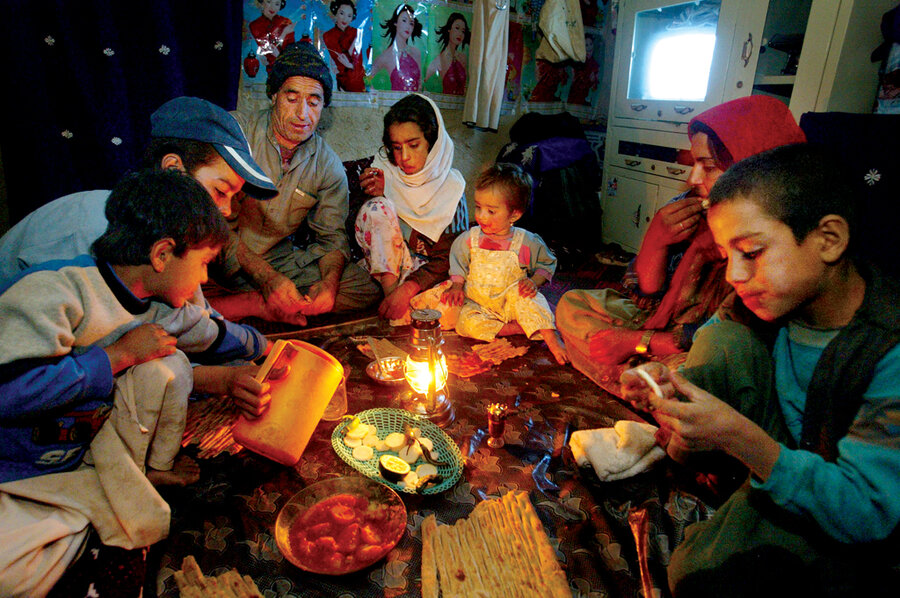Dinner is not just for dining
Loading...
How mixed-up is our dining history? To start with, the word “dinner” comes from the Latin (via the French) for breakfast. In some centuries and cultures, fasts were broken at dawn. In others, stomachs growled until midday, which is why petit déjeuner was invented.
The evening meal has always varied depending on work hours, preparation time, and, most important, available light. In his excellent domestic history, “At Home,” Bill Bryson notes that if you open your refrigerator door “you summon forth more light than the total amount enjoyed by most households in the eighteenth century.” Darkness and dining were not happy partners. So it wasn’t until the middle of the 20th century, with the eight-hour workday and the spread of indoor lighting, that we settled on breakfast, lunch, and dinner at morning, noon, and evening.
You know the drill, of course: Breakfast is the eye-opener, the fresh start on the day with juice, muffin ... and, whoa, look at the time! Lunch is the pit stop – sandwich, salad, or soup wolfed down, often while doing business, far too often at a desk. What did you have for lunch, dear? I really can’t remember.
Then there’s dinner. If the other meals are more or less forgettable, dinner is the real deal. It’s where the fast, for all intents and purposes, is finally broken, the meal that most people make an effort with, even if that means just deciding what toppings to put on a pizza. Dinner has possibilities. It isn’t strictly time-limited. It can relax into the evening.
Dinner is a time to talk about subjects deeper than the daily to-do list or office politics. More than any other meal, it preserves the essential aspects of communion. There might be candlelight to invite intimacy, as in Virginia Woolf’s touching description of a memorable dinner party in “To the Lighthouse.” But any mood lighting will do. The menu need not be as fantastic as in “Babette’s Feast,” but chopping and sautéing are nice moves. Martha Stewart isn’t required to bless the place settings; but sitting down, using a plate, and wielding utensils properly is commendable.
The main thing is a decision by all who dine together to draw close and share something of themselves over food – something not overly contentious: a school project, a challenge at work, a discussion of values or relationships. Well, maybe think twice about discussing relationships. You also might want to tiptoe through topics like money. And definitely be careful around politics. Vietnam disrupted many a spaghetti dinner when I was a kid.
Done right, dinner isn’t just a good time. Mary Beth McCauley’s Monitor cover story explores new research showing that children from families that dine together have lower rates of substance abuse, fewer eating disorders, and better grades in school. Dinner is both good for you and crucial to bonding with loved ones. See Mary Beth’s portrait of the 15-member family that Barbara and Bill Walsh nourished over the decades, the older siblings pitching in to help the younger ones. To this day, everyone has remained close. (I especially liked reading that Barbara and Bill made a point of going to dinner once a week – just the two of them – ensuring time for their essential bond.)
A proper dinner doesn’t have to happen every night. Nor does it require a big family. It can be with a friend. Or even alone. But you do have to slow down and be intentional about it. On any given day, dinner may be the last best hope that heart will speak to heart – or at least that you’ll taste your food – before the lights go out.
John Yemma is editor of the Monitor.








